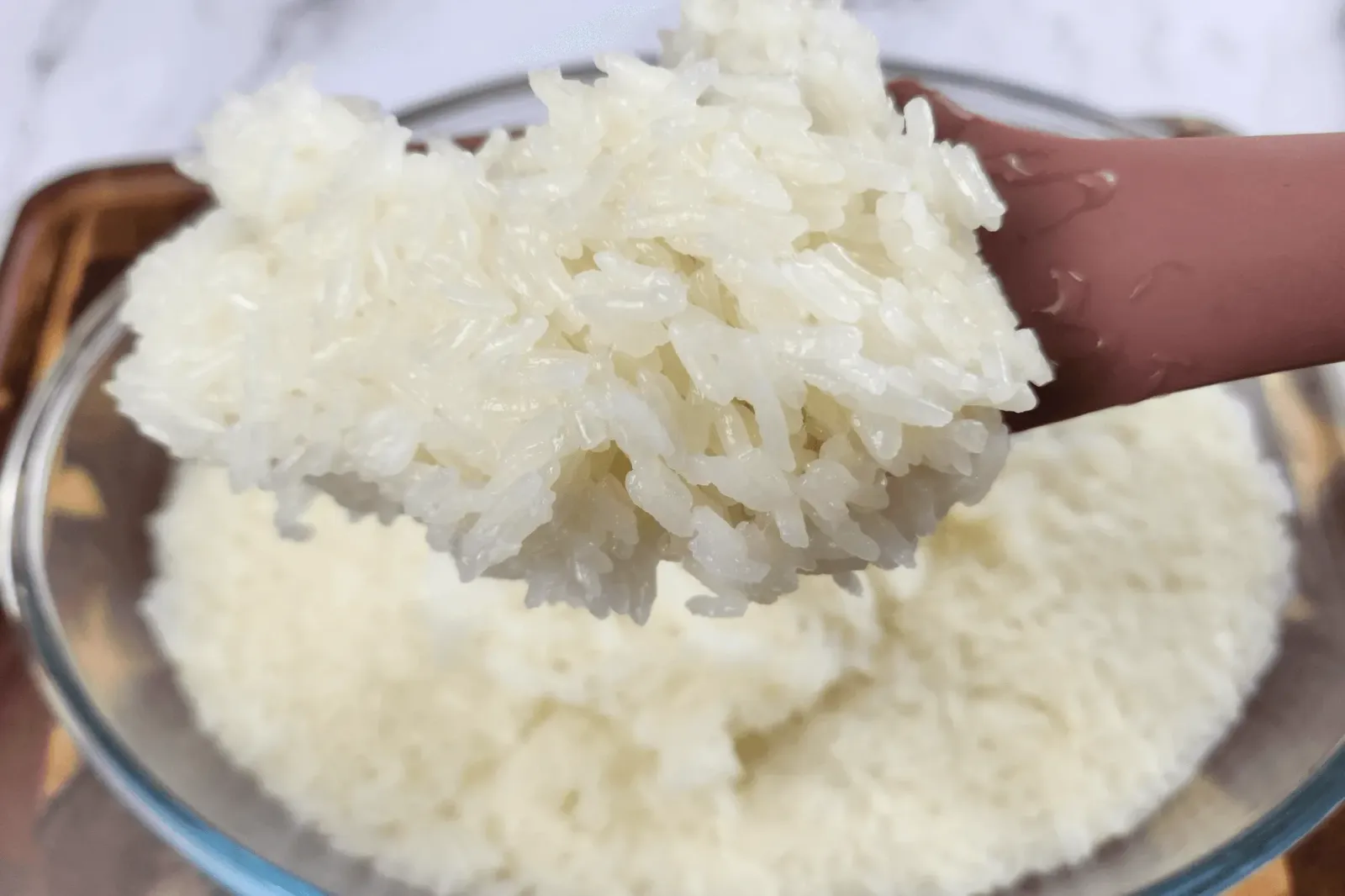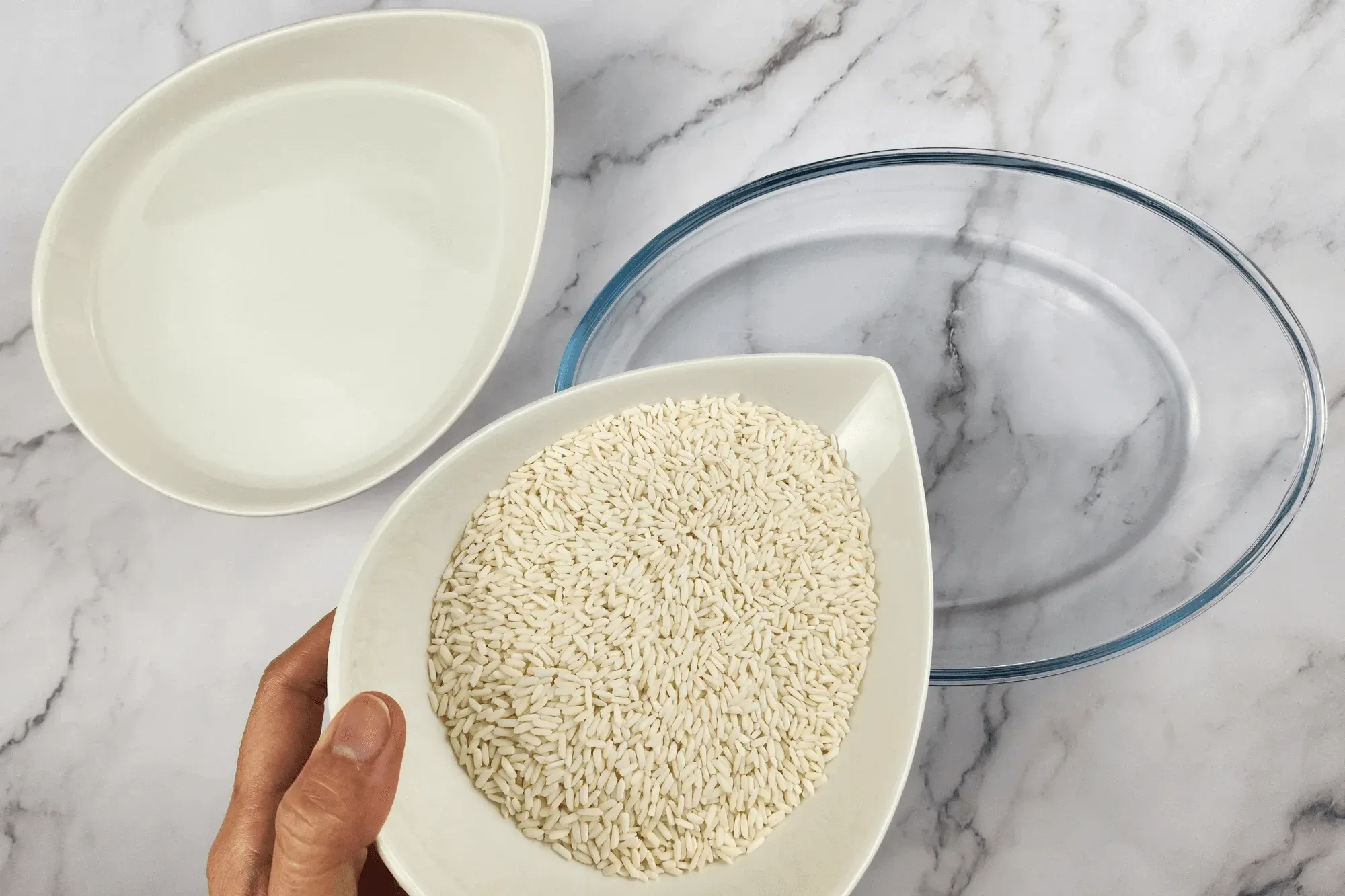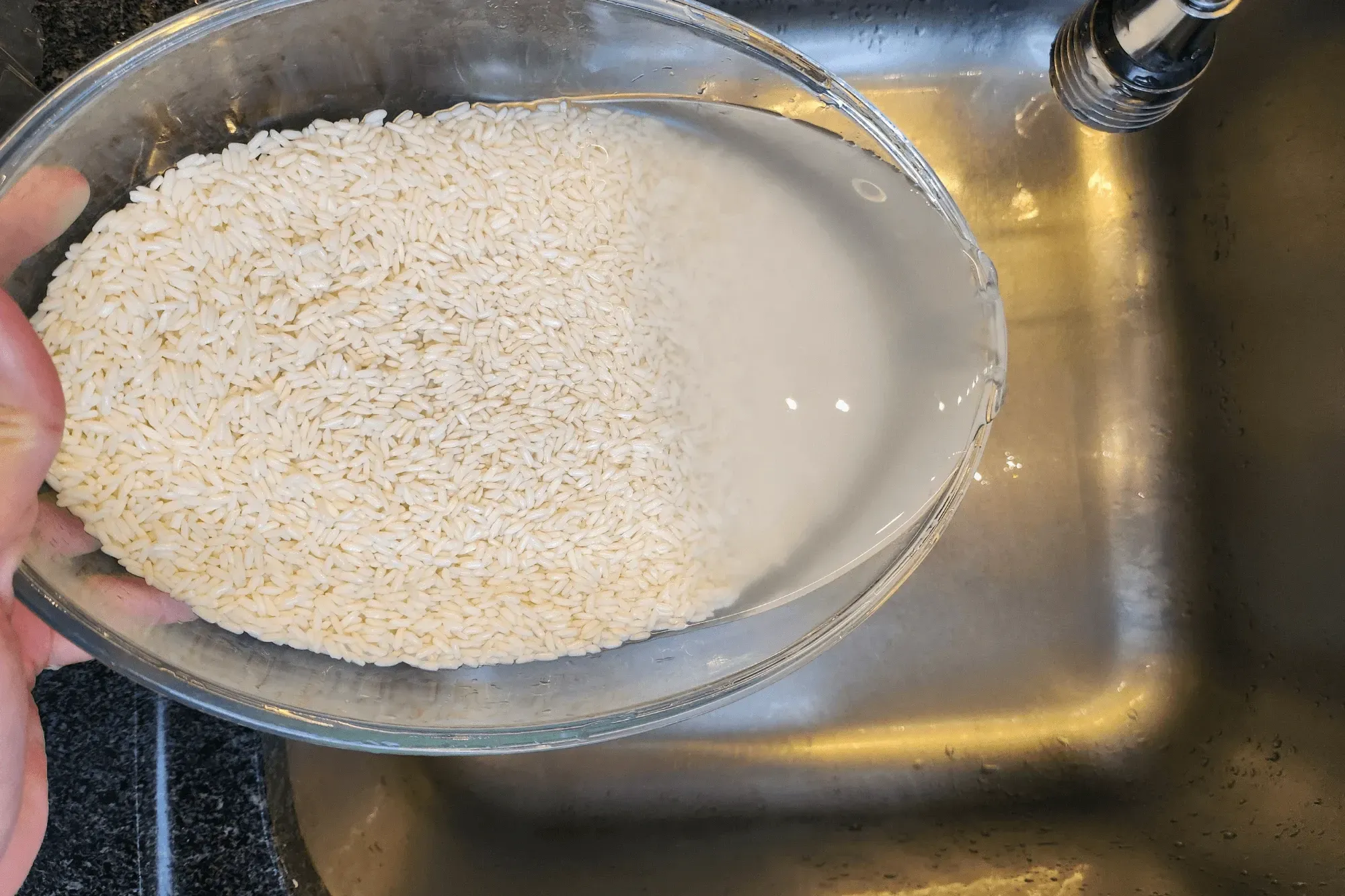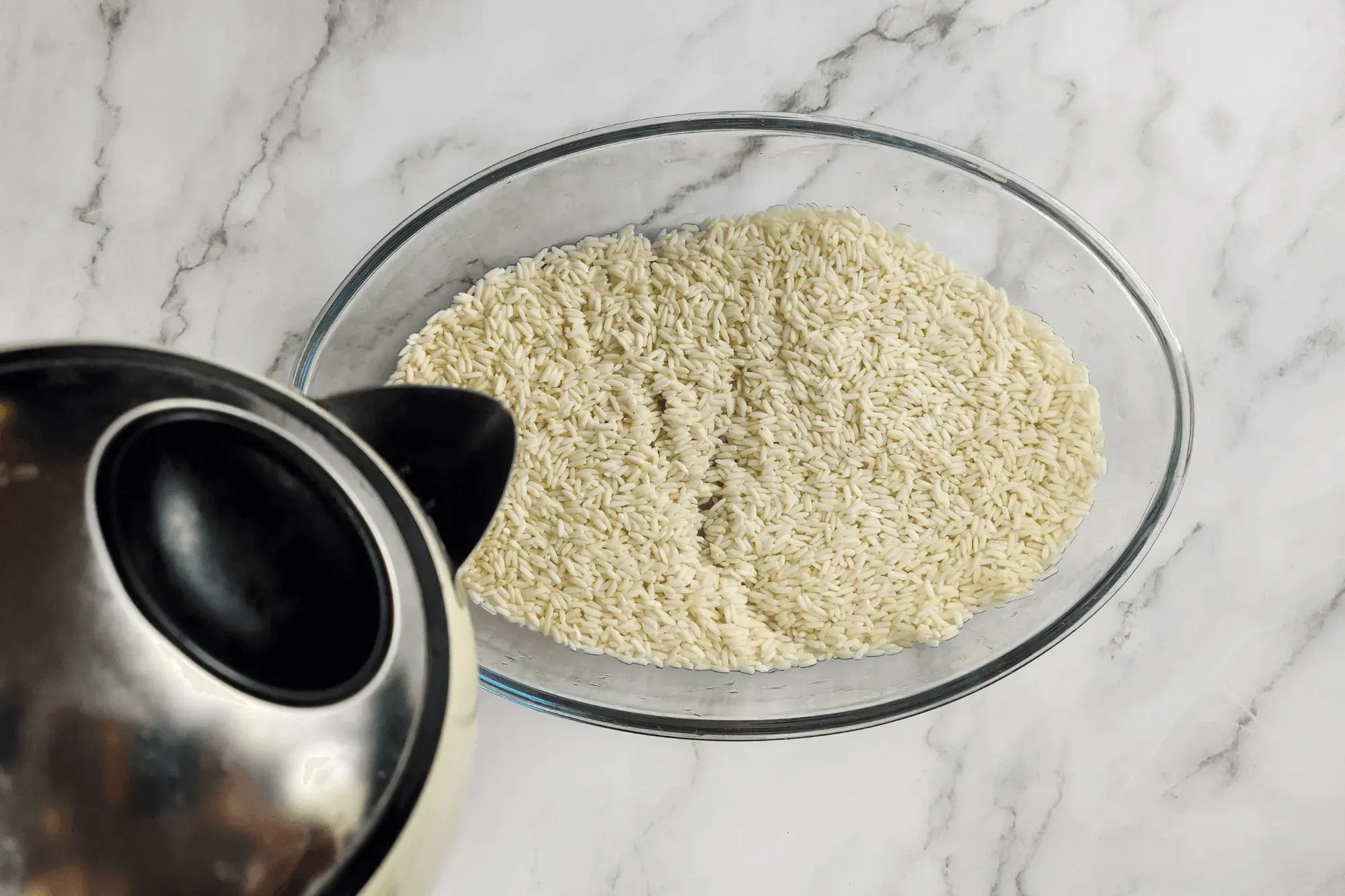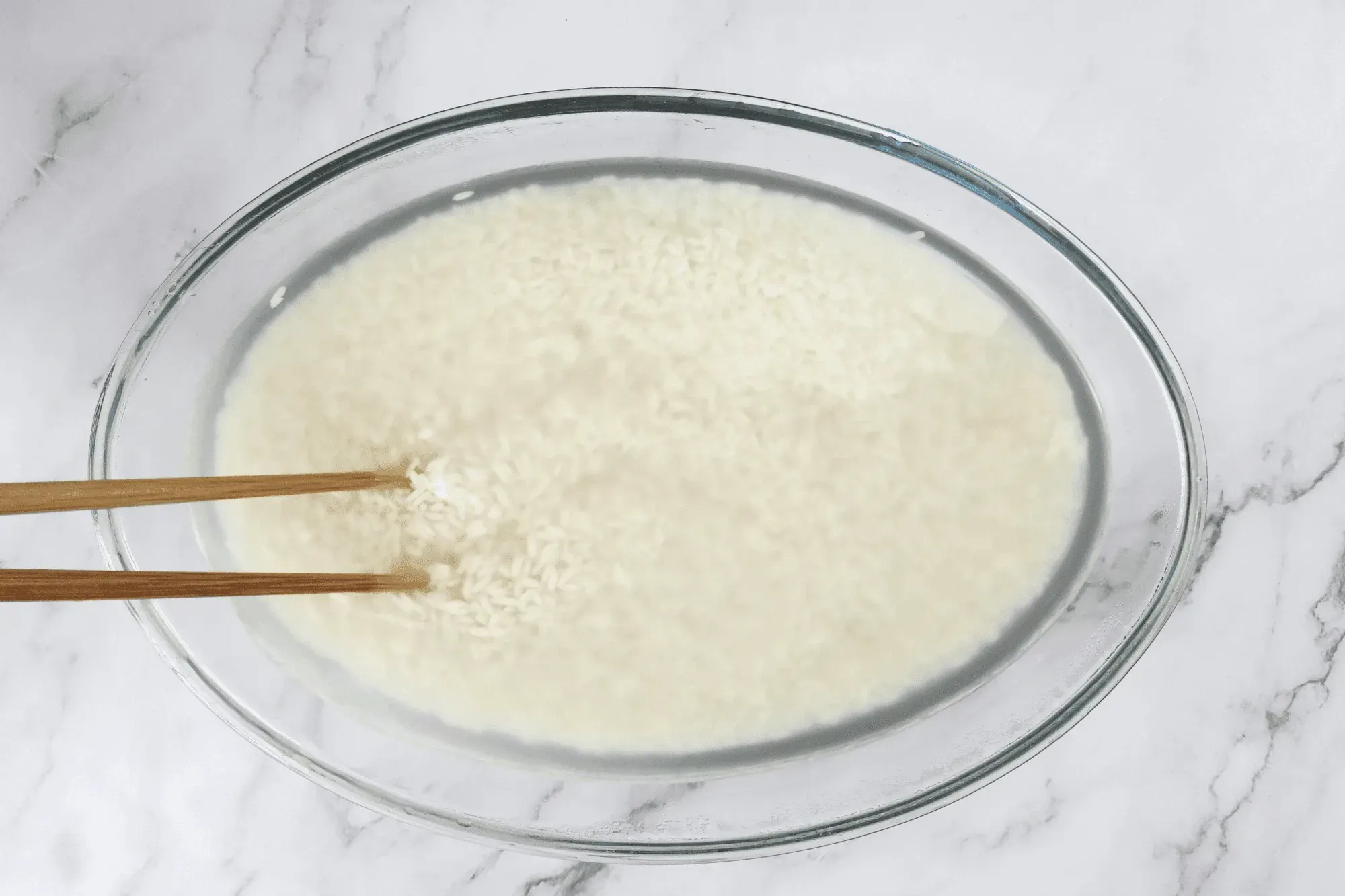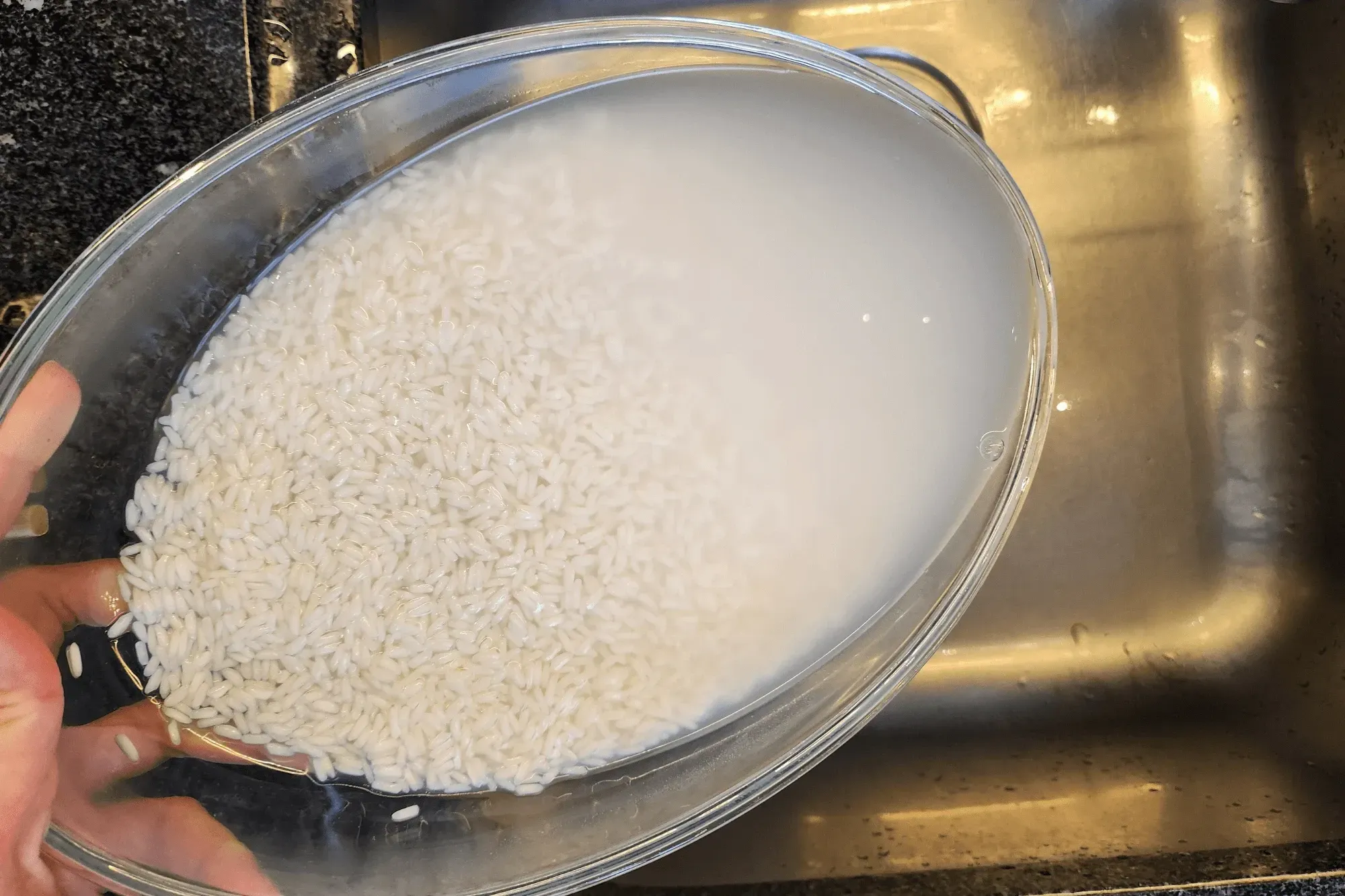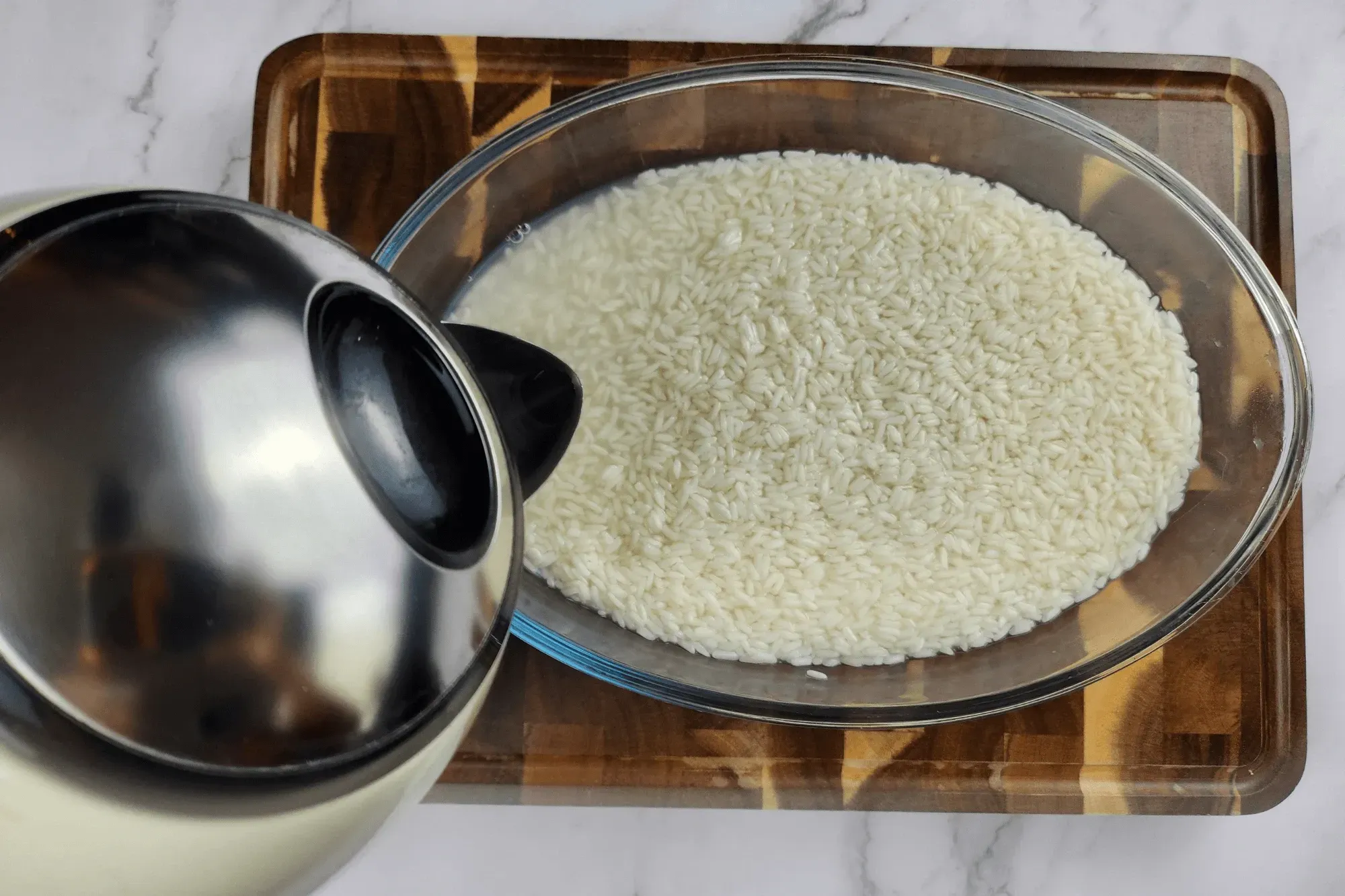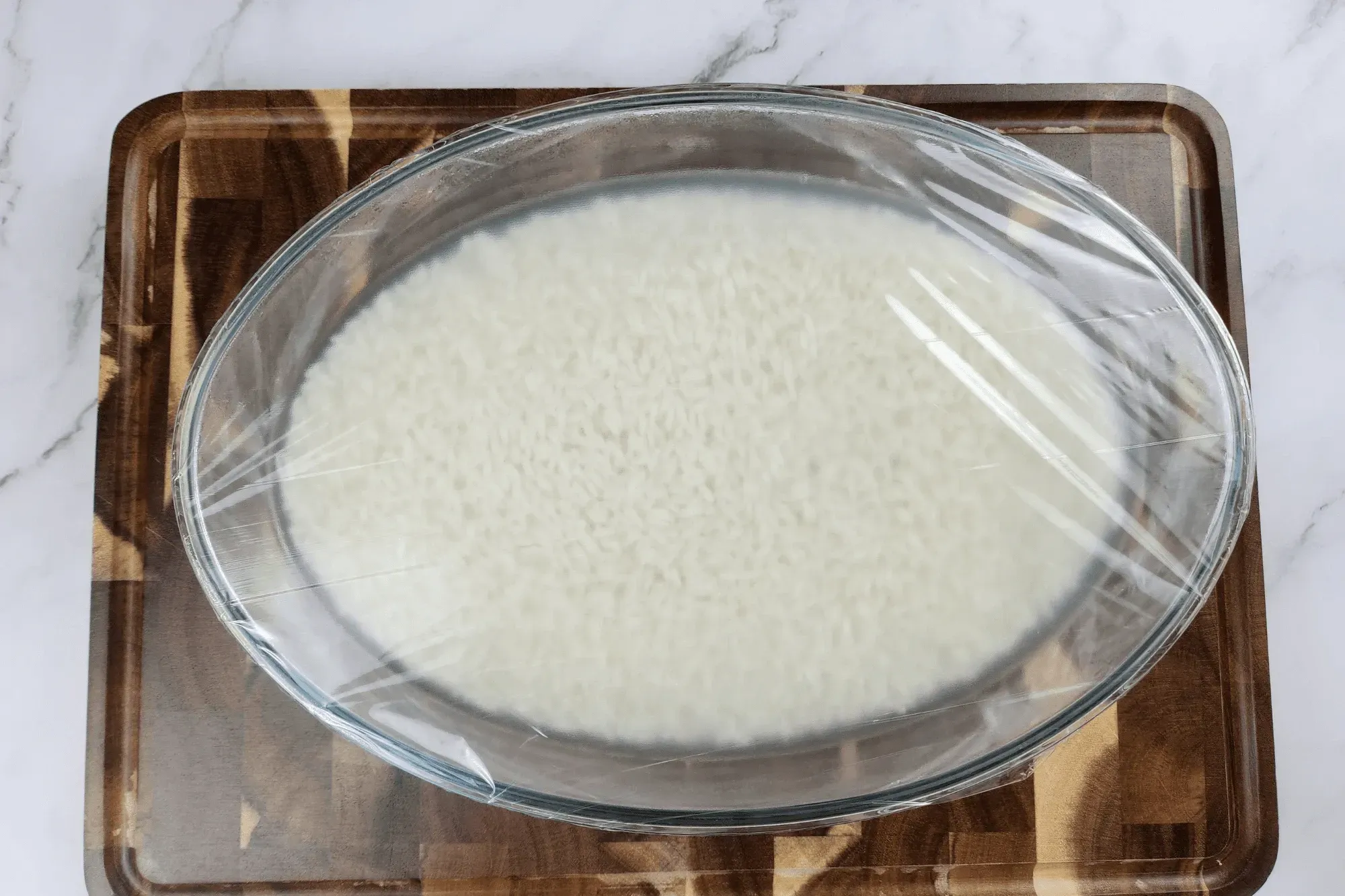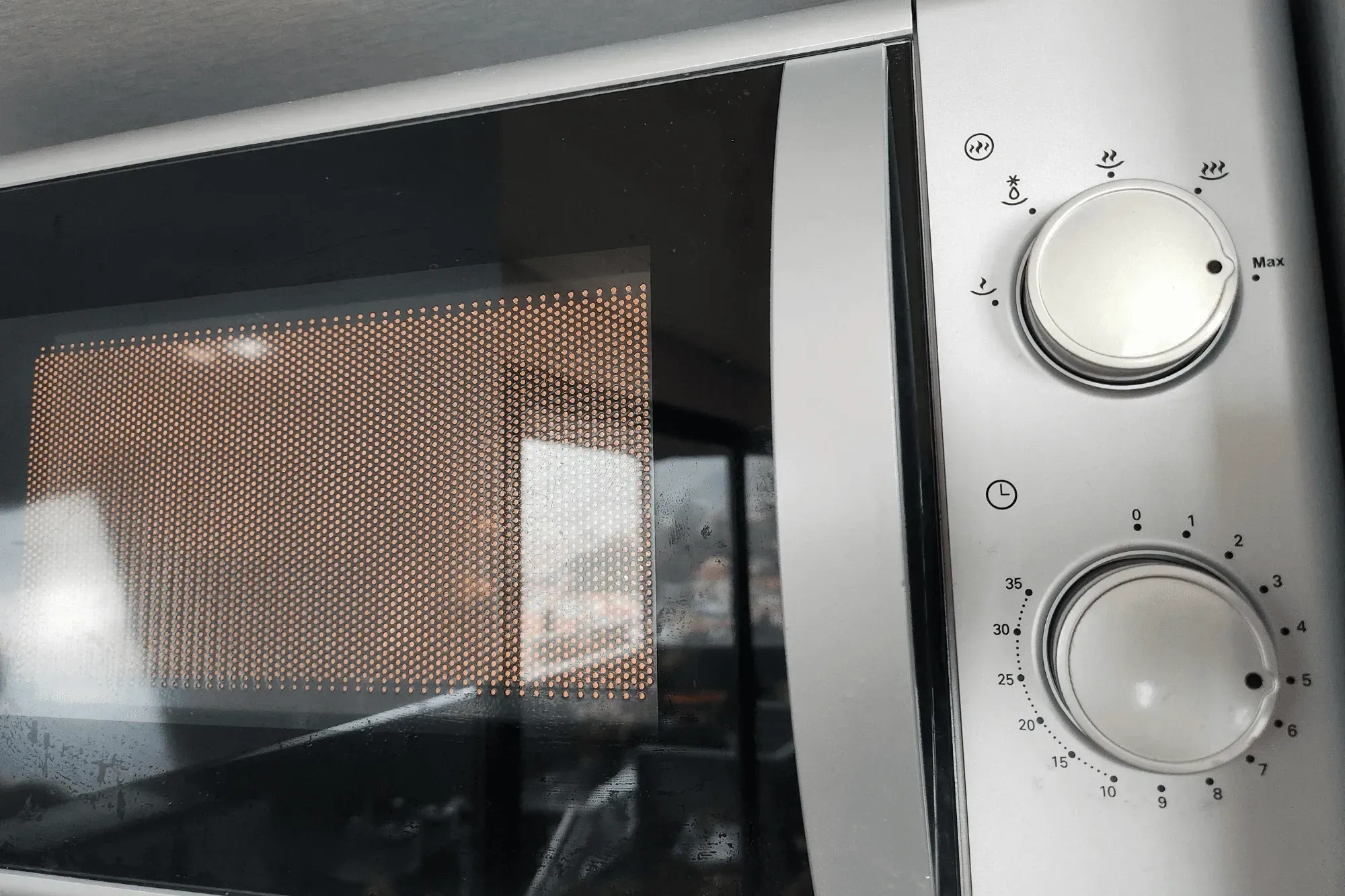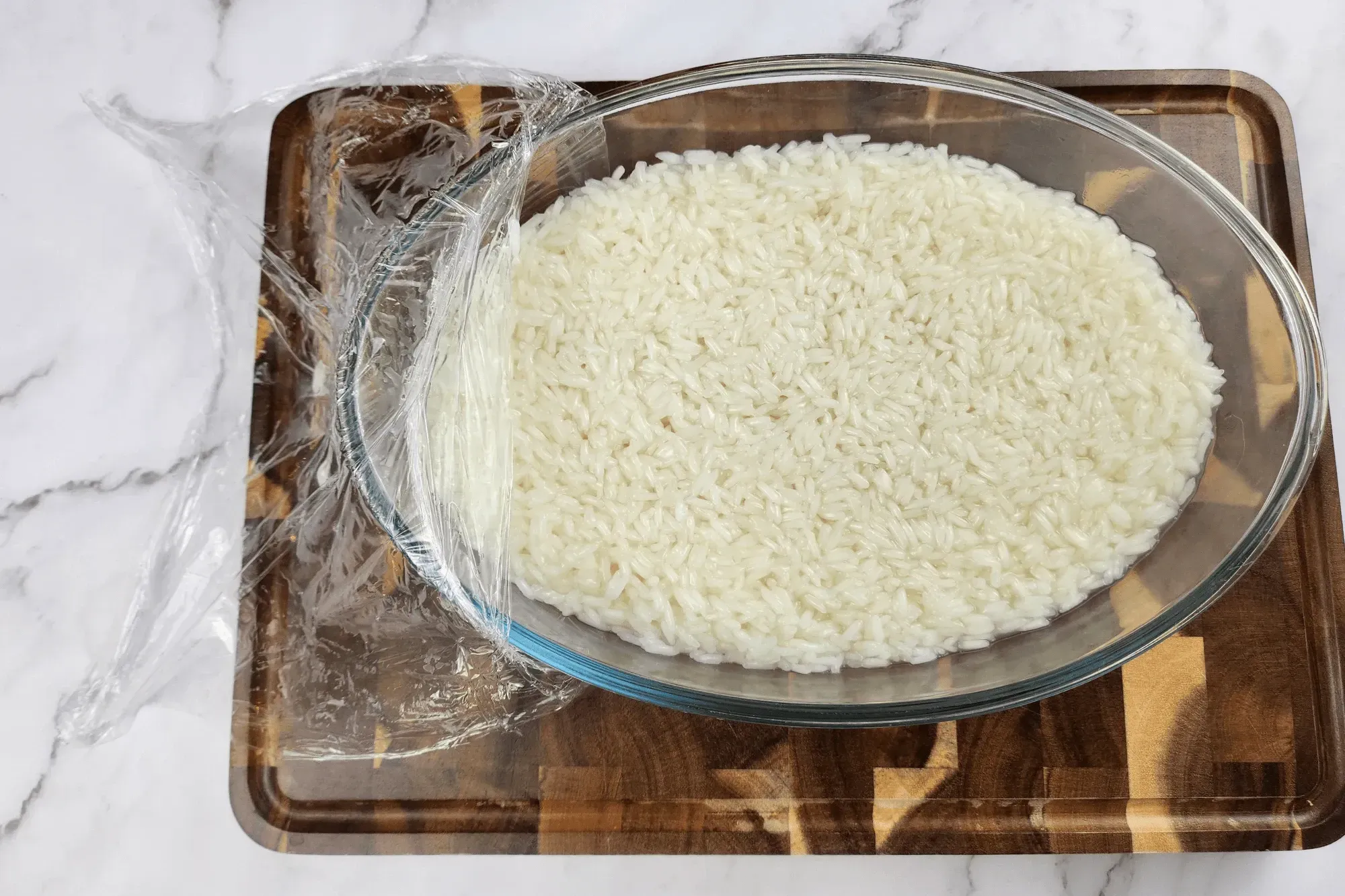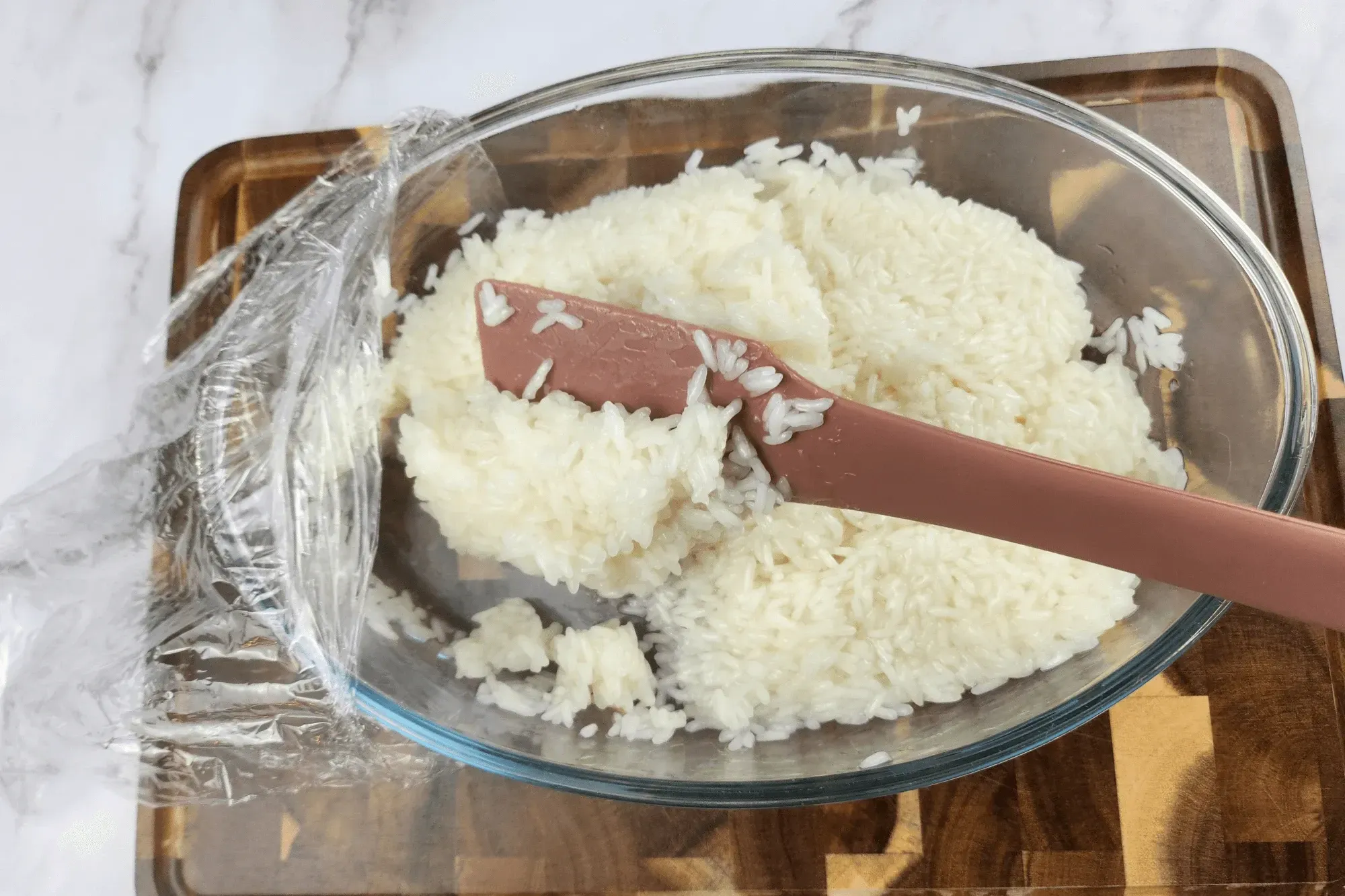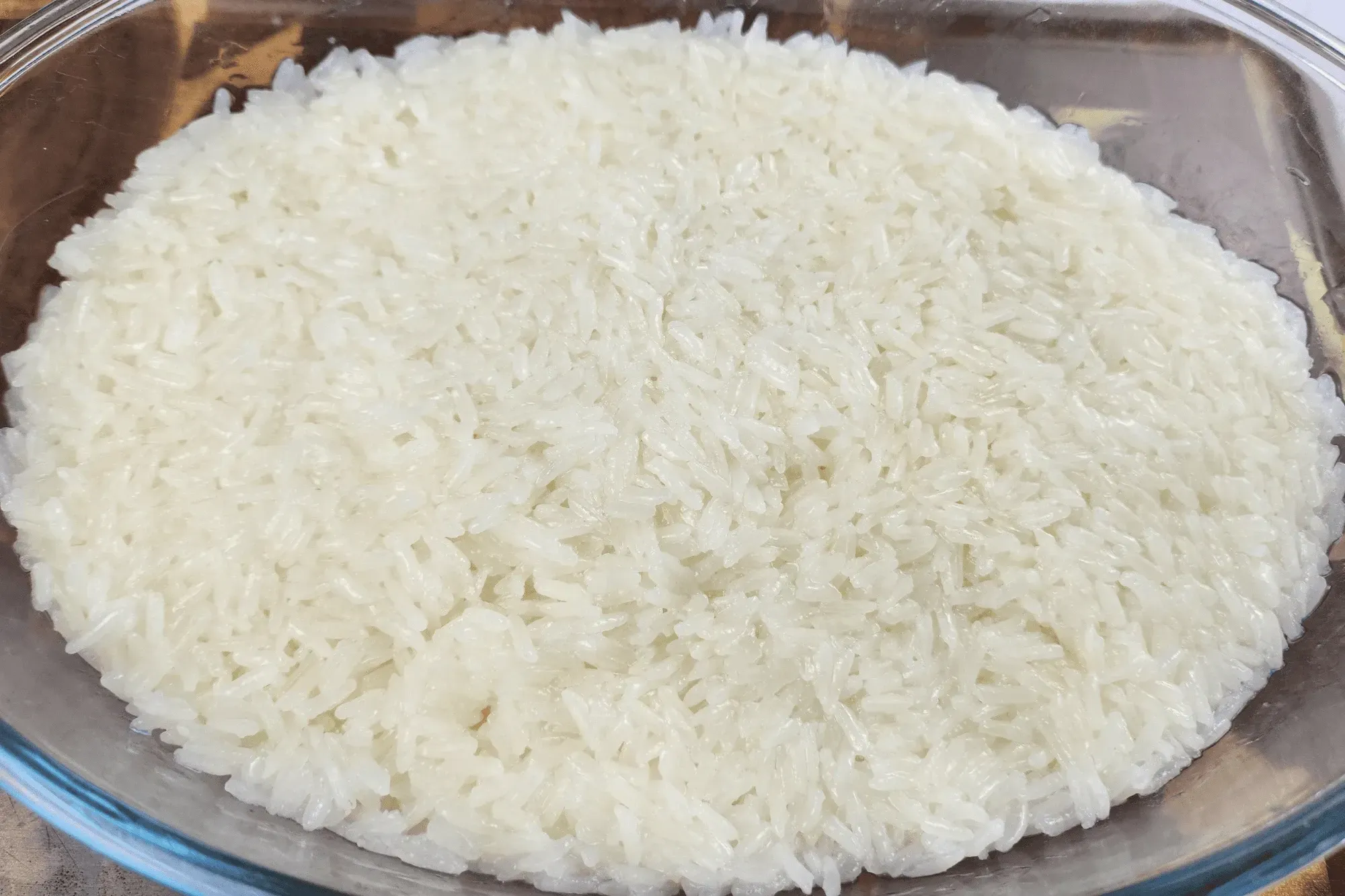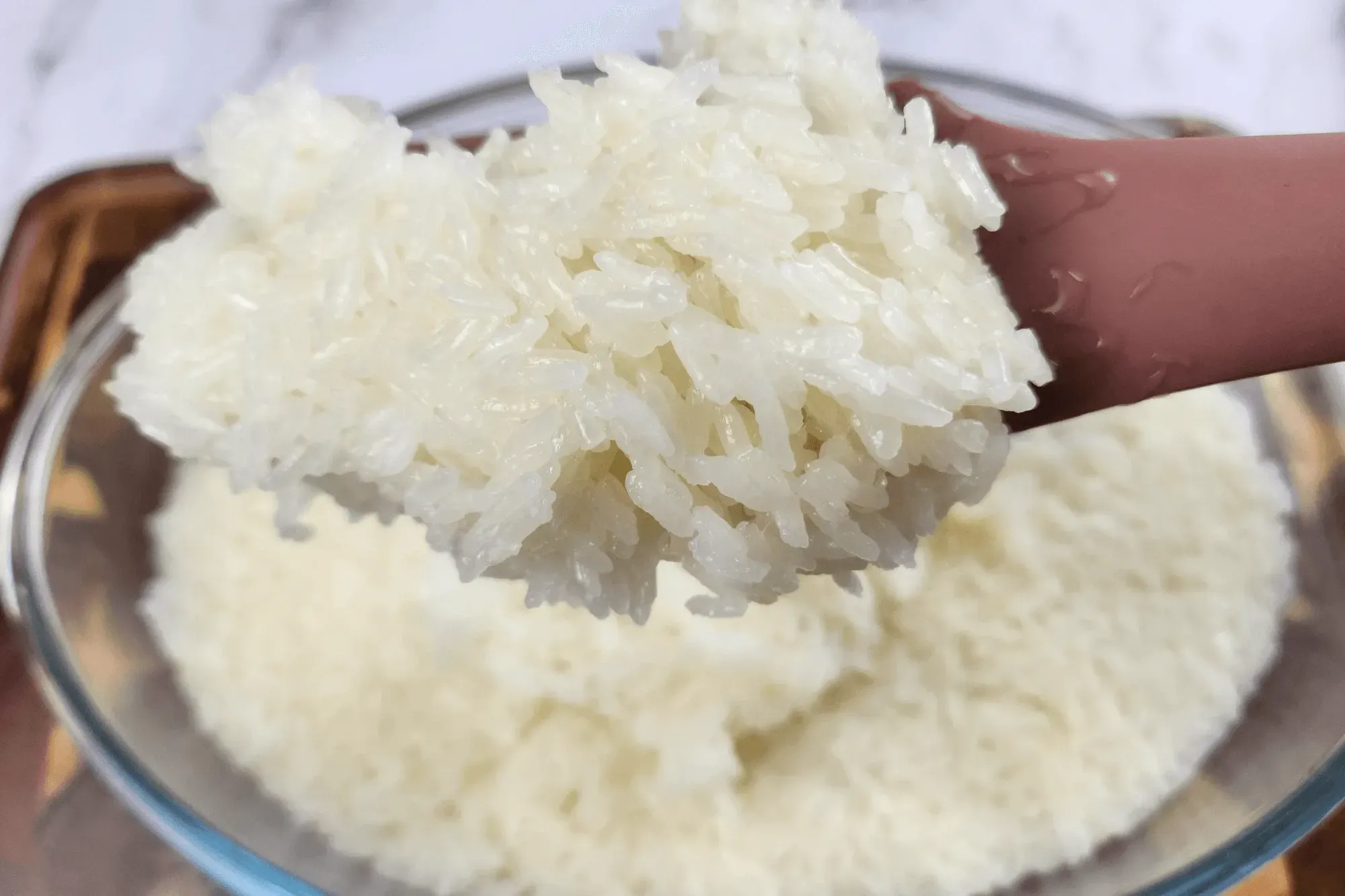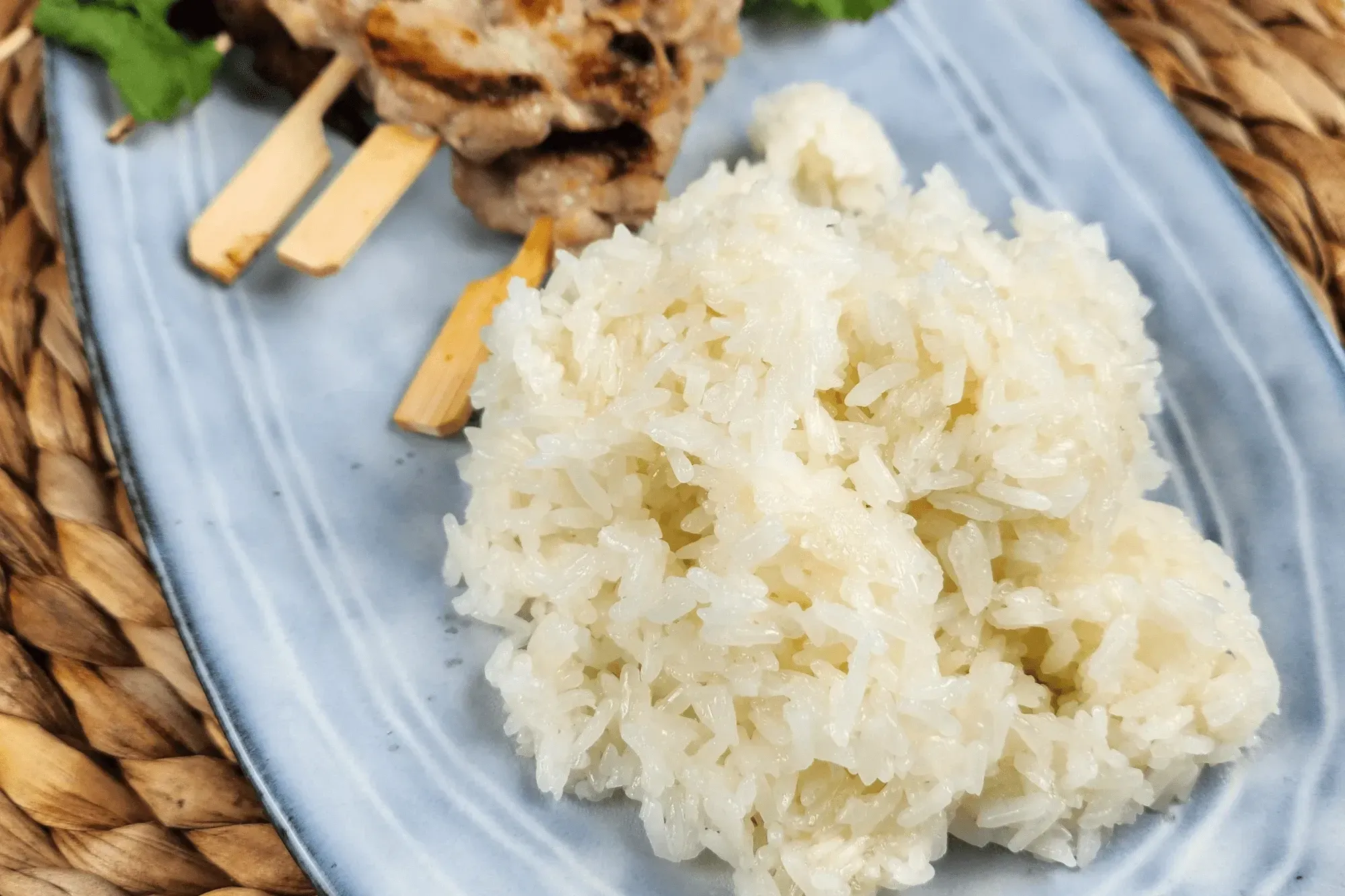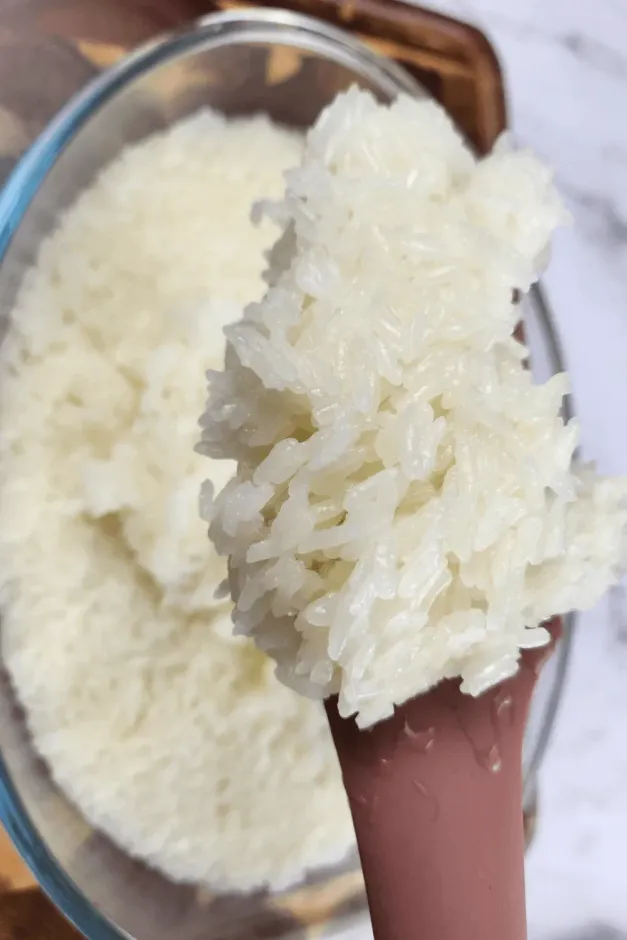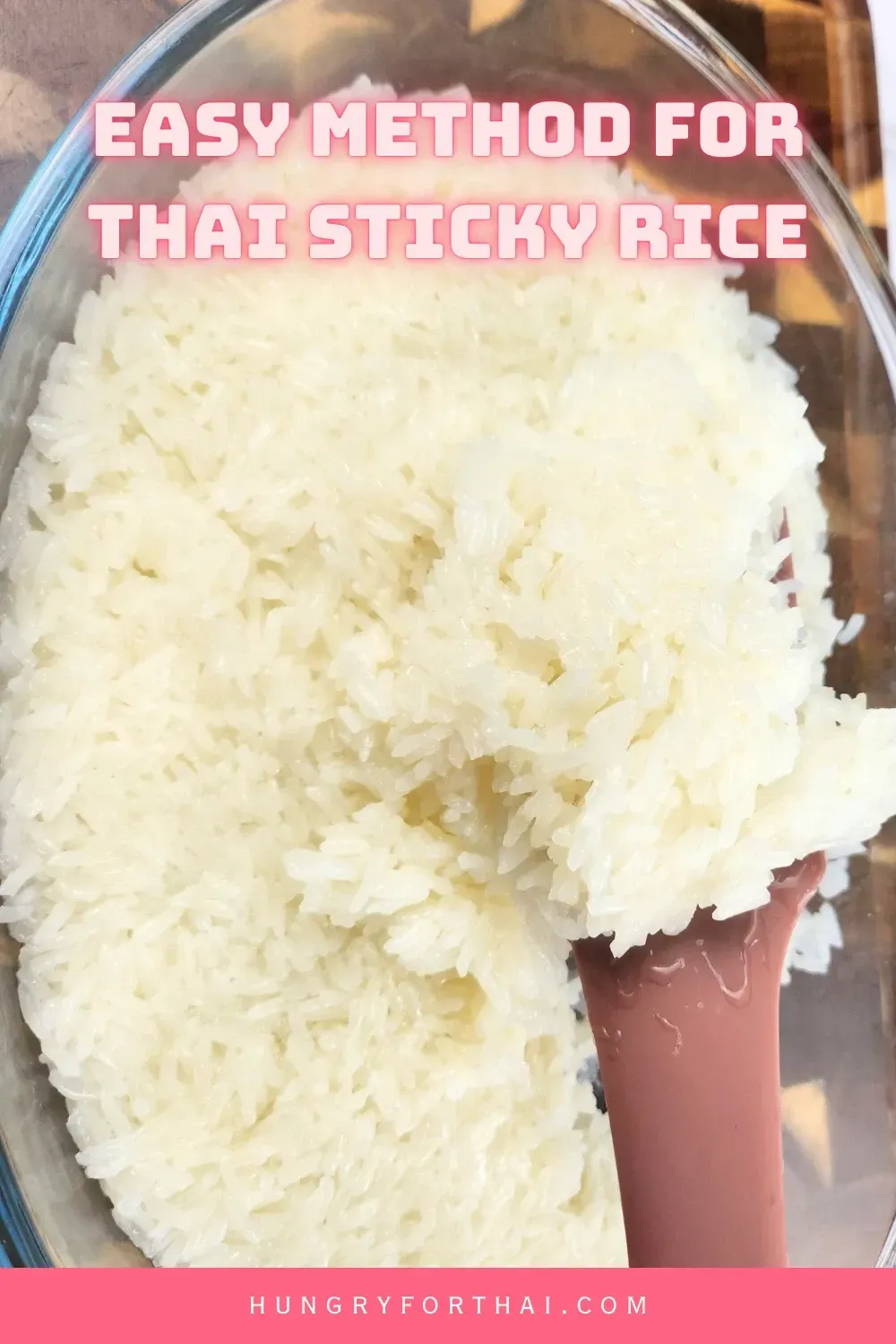Easy Sticky Rice
By Sho @ Hungry for Thai
on
Jan 25th 2025  Updated: Jul 31st 2025
Updated: Jul 31st 2025
Prep time
20 minutes
Cook time
15 minutes
Serves
3
Ingredients
Steps
-
Cooking Sticky Rice:
-
Place the sticky rice in a steaming-safe container.
-
Add room temperature water and rinse the sticky rice 2–3 times to clean it.
-
Soak the rice in hot water for 15–20 minutes, ensuring all the rice is submerged. Stir gently with a spoon or fork to distribute the water evenly.
-
Drain the water and add new hot water, just enough to reach the same level as the rice. Cover the bowl with cling film.
-
Microwave on maximum heat for 5 minutes.
-
Remove the cling film and flip the rice so the bottom layer comes to the top.
-
Spray a bit of water (if the rice seems too dry) and cover it again with cling film, leaving a small gap for air to escape.
-
Microwave on maximum heat for another 5 minutes.
-
Check the sticky rice. (If it’s still uncooked, microwave for an additional 3 minutes.) Let it settle for a few minutes before serving.
-
Nutritional info
% of daily valueCalorie Breakdown
Protein
69 cal
Fat
14 cal
Carbs
830 cal
This post may contain affiliate links. As an Amazon Associate, I earn from qualifying purchases—at no extra cost to you. Thanks for supporting Hungry For Thai!
Table of Contents
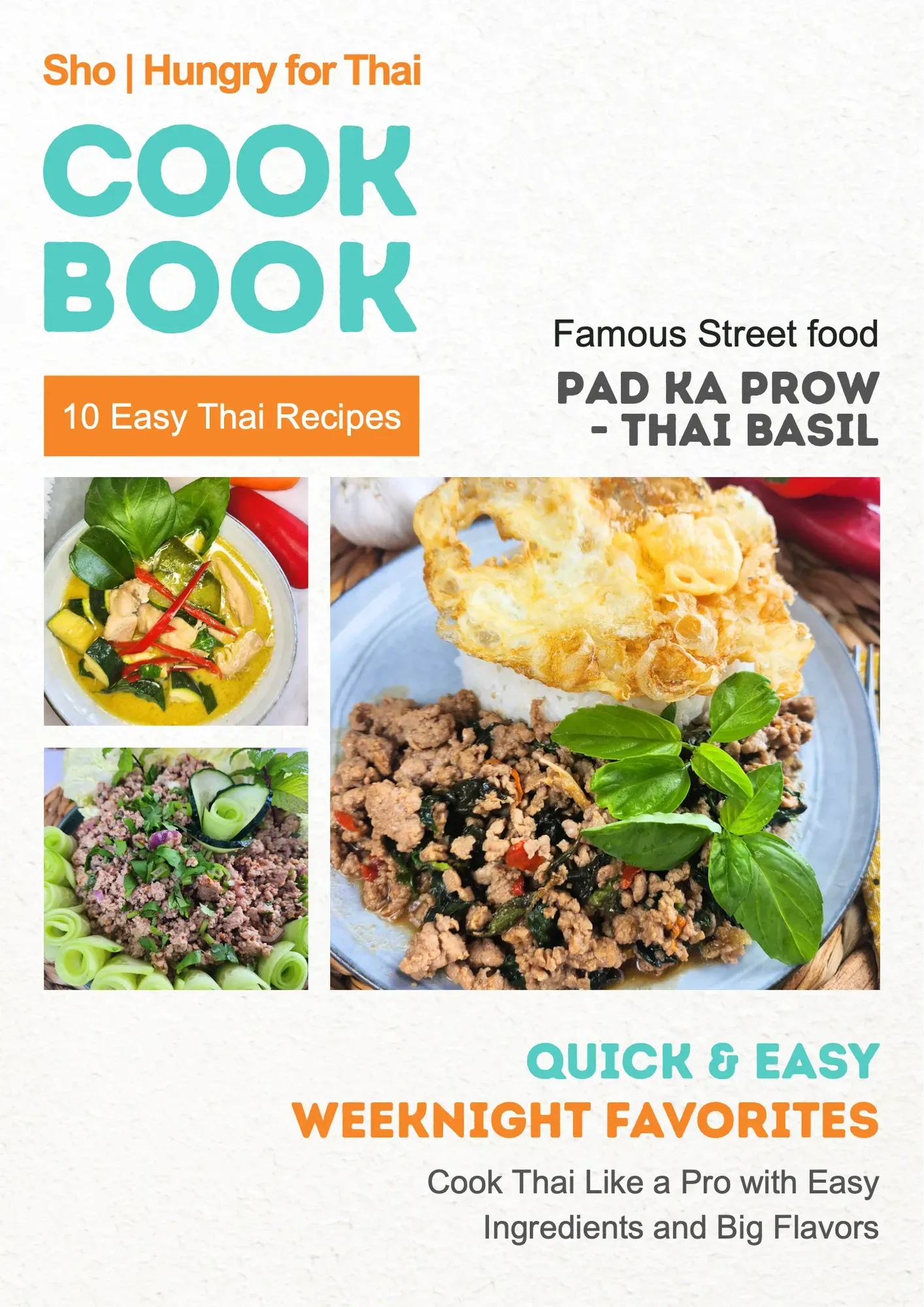
FREE DOWNLOAD
Get My Top 10 Easy Thai Recipes!
Download my top 10 easy Thai recipes absolutely free!
Curious about sticky rice? 🧐
This beloved Thai staple—also known as glutinous rice—is known for its chewy, sticky texture.
That’s perfect for scooping up grilled meats, dipping into sauces, or enjoying with mango dessert.
If you’ve ever had Thai food in Northern Thailand or Isaan, you’ve probably fallen in love with sticky rice—that warm, chewy, hand-rolled rice served in little bamboo baskets.
Whether you’re pairing it with spicy larb, dipping it in jaew sauce, or enjoying it with sweet mango and coconut cream.
Thai sticky rice (ข้าวเหนียว) is the heart of many traditional meals.
Sticky rice—called “ข้าวเหนียว” (khao neow) in Thai—is a staple in many parts of Thailand.
Especially in the North and Northeast (Isaan) regions.
It’s different from regular jasmine rice because it’s made from glutinous rice, which becomes chewy and sticky when cooked. 🌾
Texture: Soft and chewy, with a slightly sticky consistency.
Uses: Often served as a base for savory dishes, paired with grilled meats, spicy dips (like Thai nam phrik or Lao jeow), or eaten with soups. It’s also used in desserts like mango sticky rice or black sticky rice pudding.
Cooking Method: Traditionally steamed in a bamboo basket, but it can also be cooked in a rice cooker, on the stove, or even in the microwave.
If you’re wondering “what is sticky rice called in the grocery store?” — look for labels like “glutinous rice”.
What you'll need
- Glutinous Rice: A type of rice with a high starch content that becomes soft, chewy, and sticky when cooked. It’s commonly used in both savory and sweet dishes across Asia.
- Water: Essential for cooking glutinous rice, it helps soften the grains and activates the starch, creating the signature sticky texture
Why You’ll Love This Sticky Rice Recipe 🩷
- Authentic method: Just like how it’s done in Thai homes and street markets.
- Simple ingredients: Only one main ingredient!
- Perfect texture: Soft, chewy, and never mushy.
How to Cook Sticky Rice
- Rinse: Place sticky rice in a microwave-safe bowl. Rinse 2–3 times with room temp water.
- Soak: Cover with hot water and soak for 15–20 minutes.
- Drain & Add Water: Drain, then add hot water just to cover the rice. Cover loosely with cling film.
- Microwave: Cook on high for 5 minutes.
- Flip & Cook Again: Flip the rice, spray a little water if dry, cover loosely, and microwave 5 more minutes.
- Final Check: If needed, microwave another 2–3 minutes. Let sit for a few minutes before serving.
What to Serve With Sticky Rice
Looking for the perfect dishes to enjoy with sticky rice? Here are some ideas:
🥗 Starter: Som Tam (Green Papaya Salad)
🥩 Main Course: Larb Moo (Spicy Minced Pork Salad), Grilled Spatchcock Chicken or Thai Grilled Pork Jowl
🍛 Side Dish: Thai Jaew Dipping Sauce
🍰 Dessert: Mango Sticky Rice or Khanom Tom (Coconut Balls)
A few fun facts about Thai sticky rice:
- It’s usually steamed, not boiled, in a traditional bamboo basket called a huad (หวด).
- It’s often served in a small woven basket called a kratib.
- People eat it with their hands by rolling it into a little ball and dipping it in sauces or scooping up meat and salads like larb or som tam.
- It’s also used in desserts like mango sticky rice (ข้าวเหนียวมะม่วง) and khao tom mad (sticky rice with banana wrapped in banana leaves and steamed).
In Thailand, sticky rice is more than just a side dish—it’s a staple, especially in the Northern and Northeastern (Isaan) regions.
Traditionally eaten with the hands, sticky rice is often paired with bold, flavorful dishes like grilled meats and spicy salads.
Although it’s called “glutinous rice,” it contains no sugar or gluten—the grains simply become naturally sticky when steamed.
Beyond savory meals, sticky rice also shines in Thai desserts, adding a chewy, satisfying texture to sweet treats like mango sticky rice.
Whether you’re serving it with something spicy, salty, or sweet, sticky rice adds balance and heartiness to every bite.
FAQs
Yes! With a modern rice cooker, making sticky rice at home is incredibly simple.
Some models even have a “glutinous rice” setting.
It’s a hands-off way to get soft, fluffy results.
Sticky rice (glutinous rice) has a higher starch content, making it chewy and sticky when cooked.
Jasmine rice is soft and fluffy, with separate grains.
They’re both common in Thai cooking but used for different dishes.
You can find sticky rice at most Asian grocery stores or online.
Check the rice section for “sweet rice” or “Thai glutinous rice.”
Sticky rice has a slightly sweet, nutty flavor and a chewy texture.
It’s neutral enough to pair with savory dishes, yet delicious with sweet treats like mango sticky rice or black bean coconut sticky rice.
Cooked sticky rice is best eaten fresh but can be stored in the fridge for up to 3 days.
Reheat by steaming or microwaving with a splash of water to bring back its soft texture.
Yes! Despite the name “glutinous,” sticky rice is naturally gluten-free. The term refers to its glue-like texture, not gluten content, making it safe for gluten-free diets.
Enjoy making this easy Thai sticky rice at home and pair it with your favorite grilled meats or spicy Thai salads.
I’d love to hear how it turns out—drop me a comment or tag me on social media! 💬🍴
Tips
Cooked glutinous rice typically absorbs about 1.5 to 2 times its weight in water during the cooking process.
If you start with 250 grams of glutinous rice, it will weigh approximately 375 to 500 grams after cooking, depending on the amount of water absorbed.
Leave A Comment
More recipes to try…

Thai Jaew BBQ Dipping Sauce
5th June 2025
If you’re looking to add a burst of authentic Thai flavor to your grilled meats, Nam Jim Jaew is the ultimate sauce you need. This tangy, spicy dipping sauce from Isaan (Northeastern Thailand) perfectly balances heat, sourness, and savory notes, making it a must-have for steak, chicken, or pork.
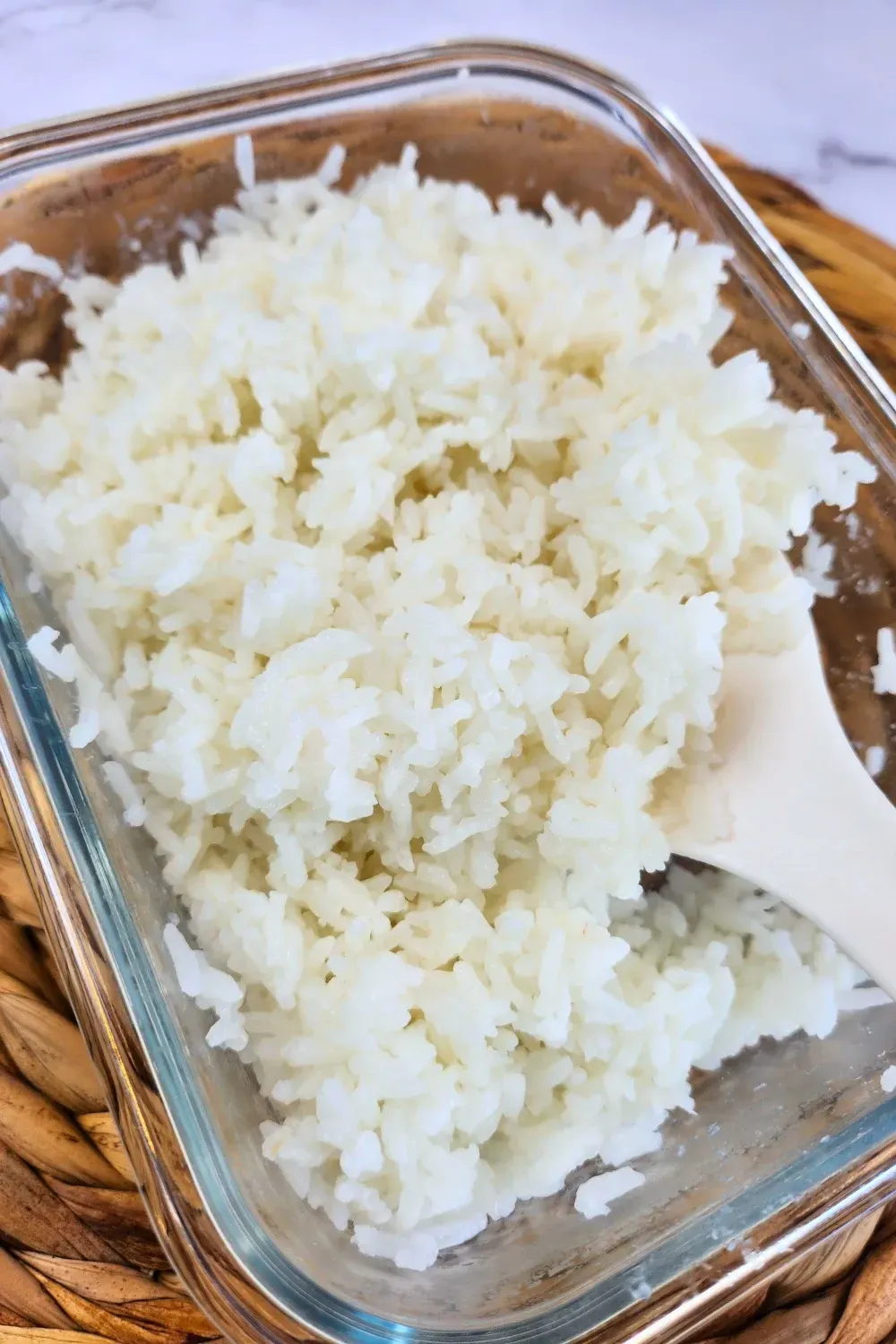
How to Cook Thai Jasmine Rice in the Microwave – Perfect Every Time
9th September 2025
If you love fragrant, fluffy Thai Jasmine rice but don’t have a rice cooker or Instant Pot on hand, don’t worry! Cooking Jasmine rice in the microwave is quick, easy, and perfect for small portions or solo meals. This method gives you the same soft, slightly sweet, and aromatic rice you’d expect from traditional Thai cooking—without any fuss. Whether you’re at home, traveling, or just craving a taste of Thailand, you’ll have perfect Jasmine rice every time.
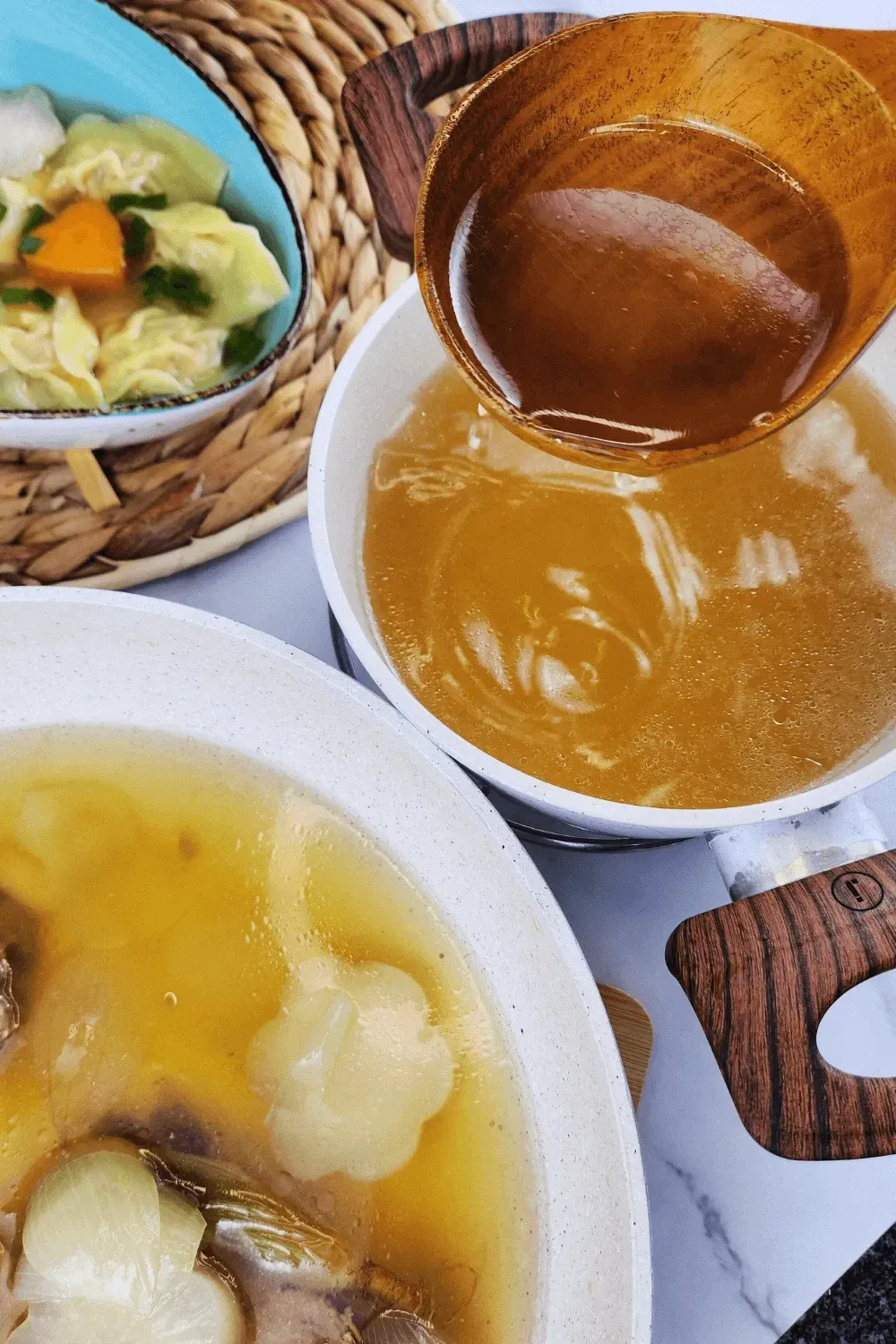
How to Make Easy Pork Bone Broth
27th March 2025
Making Pork Bone Broth Soup is simple enough to surprise you. It’s aromatic, easy, nutritious, and really good for your health and soul.

